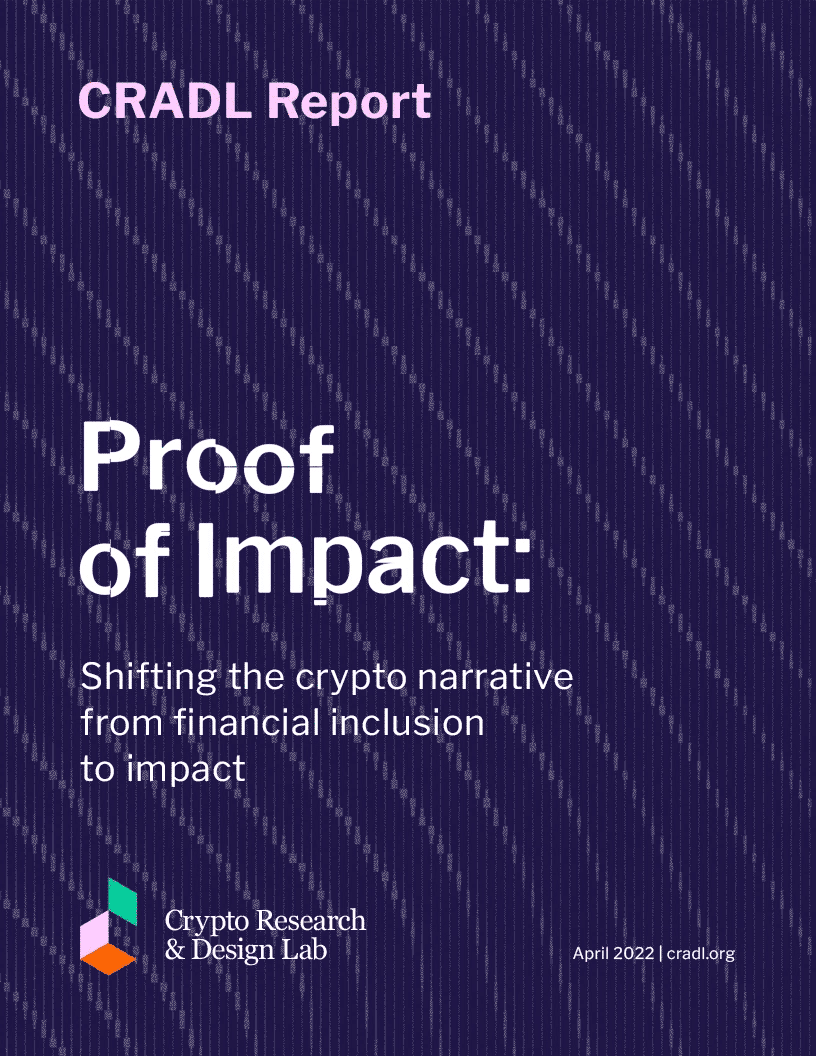Proof of Impact
Shifting the crypto narrative from financial inclusion to impact
Crypto companies are rallying around Financial Inclusion as a prime example of how crypto financial services and products have a positive social impact. Though, the effectiveness of even traditional Financial Inclusion efforts is poorly understood.
Policy memo forthcoming
For all the publicity and promise about their potential for social good, crypto-based inclusion efforts have received little analysis as to their actual impact in communities where they’ve been piloted.
Report Goals
Show Web3 that non-crypto inclusion efforts have a lot to teach crypto-based financial inclusion programs — they are, after all, targeting the same people and trying to solve the same problems.
Add depth and nuance to the evaluation of financial inclusion projects in crypto (and non-crypto projects).
Encourage projects to explicitly define success relative to improved financial health for the community and sustainability (or appropriateness) for the business.
Examination of more than 47 different financial inclusion programs spanning commercial, nonprofit, and governmental organizations.
Out of the 47 programs, 28 are crypto projects across multiple chains and 19 are non-crypto projects
Introduction of CRADL's Proof of Impact Map that helps organizations assess the likelihood of impact.
We examine M-Pesa's and Heifer International's social impact indicators and business models using the Proof of Impact Map.
What’s in it:
Key Takeaways
Financial Inclusion projects —crypto and non-crypto — are more likely to have a positive impact when they work within established infrastructure and track the long-term financial health of community members.
Crypto’s adoption as a financial inclusion tool remains limited, and its credibility is hampered by scant supporting evidence
Almost any crypto-based financial inclusion program being proposed today has an analog in the non-crypto sector that’s already been tried out.
We’ve identified two key factors—business sustainability model and social impact metrics—that correlate with improved financial health for participants — regardless of the financial system on which it’s based.
As crypto matures as a platform, we must adopt a more mature approach to self-assessment, or risk missing an enormous opportunity to transform the way the world thinks about and advances financial inclusion.
We created the Proof of Impact Map to show how two factors—business sustainability model and social impact metrics—correlate with the success of selected inclusion efforts. In our report, we feature two well-established non-crypto programs that execute on these factors: M-Pesa, a mobile phone-based financial services offering and Heifer International, a livestock and crop program. Both have had well-documented success in improving financial inclusion over the course of several decades. Both offer their services as part of their core business. And both track impact metrics in addition to usage metrics: Heifer tracks living income increases, and M-Pesa tracks job creation.
Related CRADL Content
Read our report
Fill out this form to access a Google Slides and PDF version of our reports.
Our primary goal is impact. We encourage readers to share, iterate on, and apply our research findings. All of our reports are available as Googles Slides and PDFs so that you can easily copy and paste content from the slide deck into your materials.
Be sure to attribute CRADL as the source.
All of our research is under a Creative Commons BY-SA 4.0 license.


